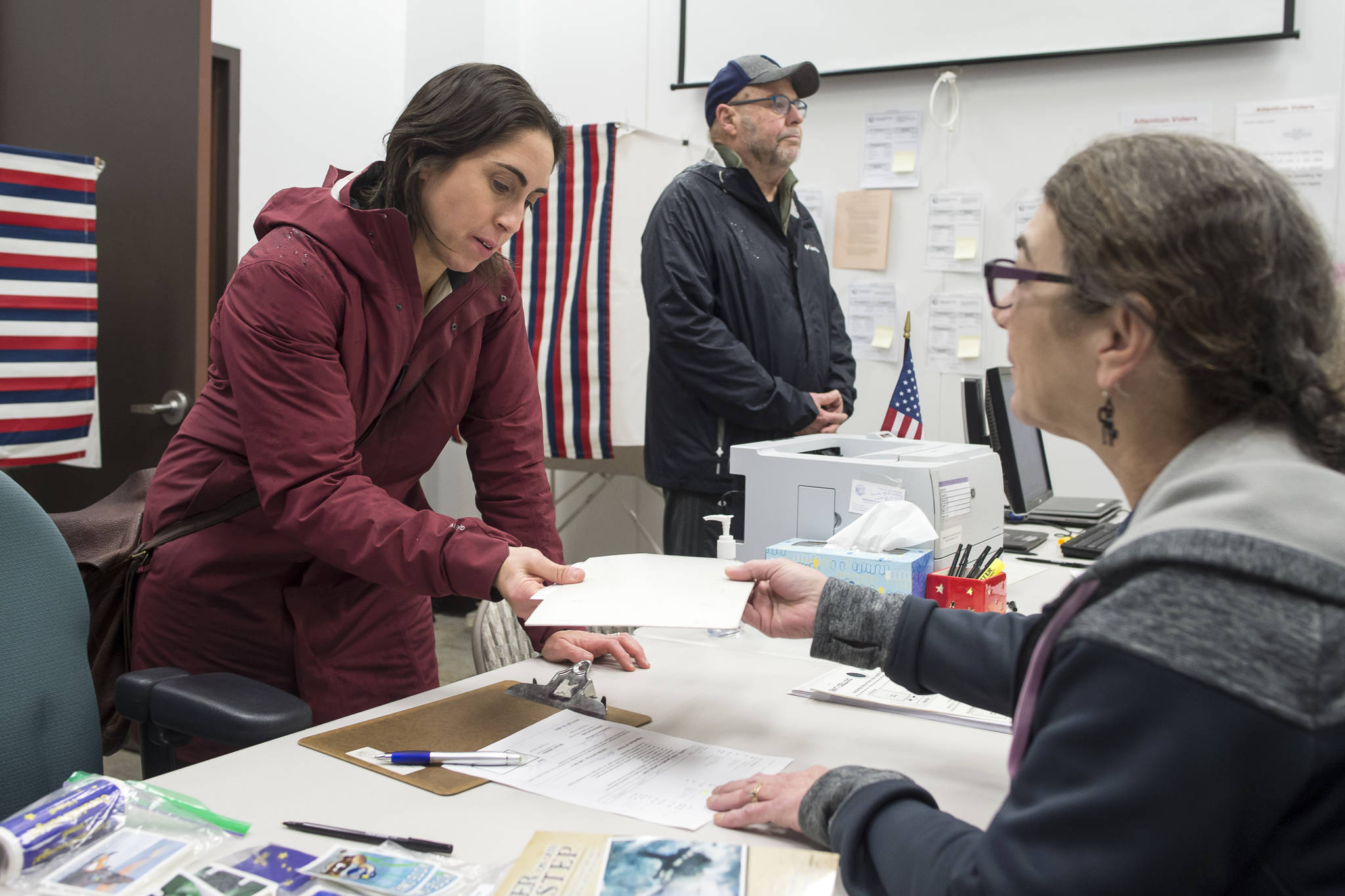Byron Mallott is usually one of the first early voters when polls open at the State Office Building.
This year, the first person in line was City and Borough of Juneau Assemblywoman Carole Triem. As of noon, the former lieutenant governor had not appeared at the polls, and workers said the pace of participants was steady but unexceptional.
Voting in Alaska’s statewide general election opened at 8 a.m. Monday, kicking off two weeks of options before Election Day.
Samantha Miller, a spokeswoman for the Alaska Division of Elections, said she had not heard of any problems at any of the state’s early voting stations.
“Not that I’ve heard, but folks are loving those stickers,” she said.
This year, the division printed thousands of special “I Voted” stickers in multiple languages and featuring artwork by Juneau artist Patrick Race. The stickers are available only for early voters — those casting ballots on Election Day will receive the traditional blue-and-gold Big Dipper design.
Voting is on the eighth floor of the State Office Building from 8 a.m.-5 p.m., Monday-Friday. The elections office in the Mendenhall Mall Annex is also open for voting during the same times plus Saturday, Nov. 3, 10 a.m.-4 p.m., and Sunday, Nov. 4, noon-4 p.m.
While long lines were seen elsewhere in the country — more than 60,000 people voted in Houston, Texas, on the first day of early voting, according to the Associated Press — the wait to vote in the State Office Building was shorter than the wait for smoothies at the store across the hall. Approximately 80 people had cast ballots by 12:30 p.m.
“I think it’s really important to vote,” said Katherine Sims, one of those 80 people.
Sims recently moved to Alaska from Washington State and said it was her first time using a polling station. (Washington conducts elections by mail.)
“This feels like a really important election,” she said.
Fellow voter Nancy Jones said she came to the polls because she knew who she wanted to vote for after the events of last week. Jones was referring to Gov. Bill Walker’s announcement that he was suspending his re-election.
“I sure hope the word gets out that Walker isn’t running,” she said, adding “change and education and health care” were her top issues of concern.
Gladys Castaños said she isn’t a very political person and has “been lazy before when it comes to voting,” but she wanted to exercise her right this year.
She said the Permanent Fund Dividend was her top issue of note.
In addition to the early ballots being filed Monday, the state is receiving an increasing number of absentee ballots. As of the end of the day Friday, 3,076 absentee ballots had been voted and returned to the Division of Elections. More than 22,000 absentee ballots have been mailed to voters.
Early voters have two main options for casting their ballots.
In-person absentee voting involves filling out a ballot and having the Division of Elections verify your registration at a later date. Your vote is not counted until your identity is verified. Early voting happens when the Division of Elections verifies your identity before you cast your vote.
Early votes cast through Nov. 5 are counted on Election Day, as are absentee ballots received by the Friday before Election Day.
Absentee and early voting has become increasingly common in Alaska.
In the 2006 midterm general election, Alaskans cast 42,307 early and absentee votes. That rose to 55,015 in 2010 and 73,935 in 2104.
To put those numbers in perspective, 285,449 votes were cast in Alaska during the 2014 midterm elections; 258,746 votes were cast during the 2010 midterms.
• Contact reporter James Brooks at jbrooks@juneauempire.com or 523-2258.

